Media | Articles
Final Parking Space: 1951 Buick Roadmaster Riviera Sedan
The Buick Roadmaster name goes back all the way to the 1936 model year, when the Series 80 Roadmaster first hit showrooms. Except for a break during World War II, when the Buick Division built aircraft engines and M18 Hellcat Tank Destroyers, Roadmasters were built from 1936 through 1958. Production resumed for the 1991 through 1996 model years, when Roadmaster sedans and wagons were sold. Perhaps the most majestic of all Roadmasters were the 1949–52 models, long and low with smooth-running straight-eight engines. Here’s one of those cars, which I recently found in a Denver-area self-service car graveyard.
The four VentiPort holes on each front fender mean this is a Roadmaster for sure, since the lowly Supers and Specials got three VentiPorts per side apiece in 1951. Some sources state that the Riviera name was used only for hardtops in ’51, but Buick applied the Riviera designation to all long-wheelbase Roadmasters that year, as well as to higher-end Specials and Supers. The Riviera name would eventually be applied to many Buicks, but it didn’t become a model name in its own right until 1963.
The firewall body tag is long gone, but the first digit of the serial number on the door pillar shows that this car was built at Fairfax Assembly in Kansas City, just 600 miles to the east of this car’s Final Parking Space.
Many American manufacturers installed straight-eight engines in their cars during the 1920s through 1950s, but most of those were flathead designs. Notable exceptions include the wild overhead-cam straight-eights that went into Duesenbergs and, of course, the overhead-valve Buick straight-eight.
This one displaces 320 cubic inches (5.2 liters) and was rated at 152 horsepower. That was respectable for the early 1950s, but the introduction of the groundbreaking Oldsmobile and Cadillac overhead-valve V-8s for the 1949 model year made the Buick Eight seem antiquated to car shoppers, who were then marveling at supersonic rocket planes and the inauguration of a nuclear arms race with the Soviets.
Marketplace
Buy and sell classics with confidence
The Buick Division would get its own V-8 engine starting with the 1953 model year, with Chevrolet and Pontiac following with their division-specific pushrod V-8 designs a couple of years later. To be fair to the 1951 Buick, its engine made 17 more horsepower than the Olds 303 Rocket and just eight fewer than Cadillac’s 331. That said, the very first rock ‘n’ roll song ever recorded (by Ike Turner) had as its subject matter the 1951 Oldsmobile Rocket 88. How could any inline engine top that?
Despite GM’s spectacular coup with the world’s first truly successful automatic transmission, GM’s Buick Division resisted the Hydra-Matic and ended up with a very smooth but not-so-efficient automatic developed from the powertrain of the M18 Hellcat.
This was the Dynaflow, which sometimes gets called a two-speed but uses its complex torque converter rig to deliver a driving experience more like that of a CVT with two manually selected ranges. This Roadmaster would have been thirsty with its big eight and Dynaflow, but so what? Rolls-Royce didn’t even offer an automatic transmission until 1952, instead using four-on-the-tree manuals to rattle the fillings out of their passengers’ teeth, while Dynaflow-equipped Buicks rolled serene and shift-free.
You would think such a luxurious postwar machine wouldn’t have met this fate, but it spent too many years outdoors in the harsh Colorado High Plains climate to be an economically sensible restoration. Its parts will live on in other Roadmasters.
The adobe-like layers of body filler could be hiding unseen rust, but plenty of usable body and trim parts await junkyard shoppers.
***
Check out the Hagerty Media homepage so you don’t miss a single story, or better yet, bookmark it. To get our best stories delivered right to your inbox, subscribe to our newsletters.
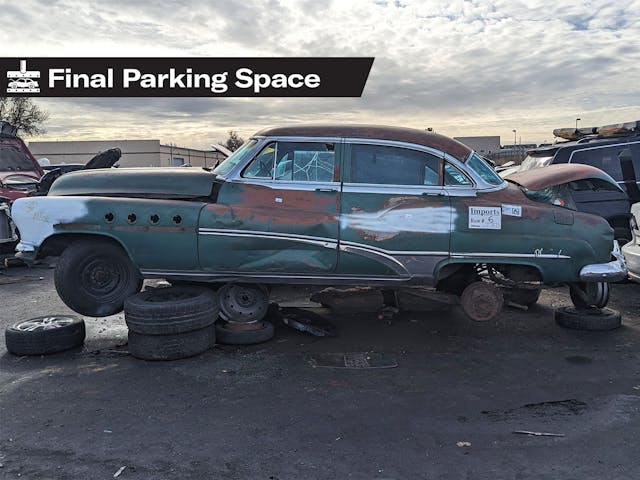
















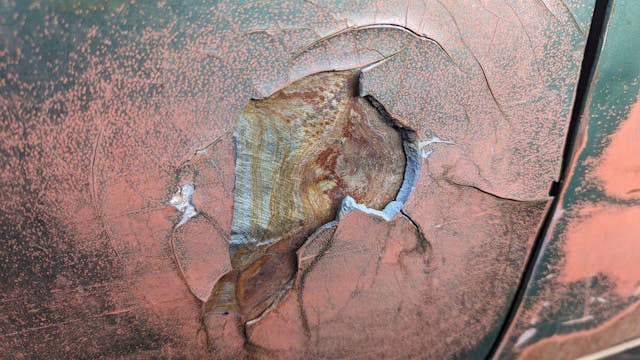




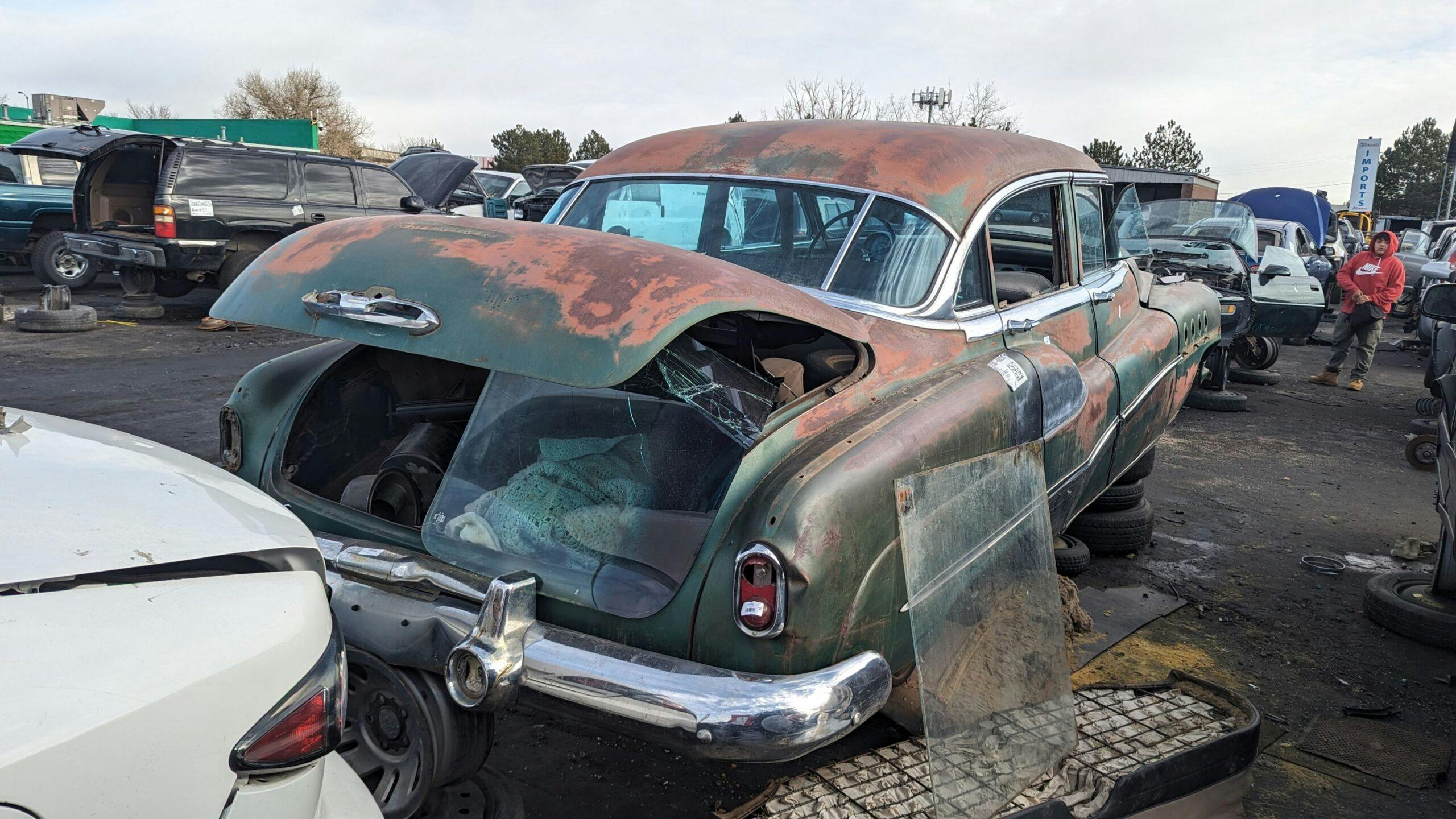







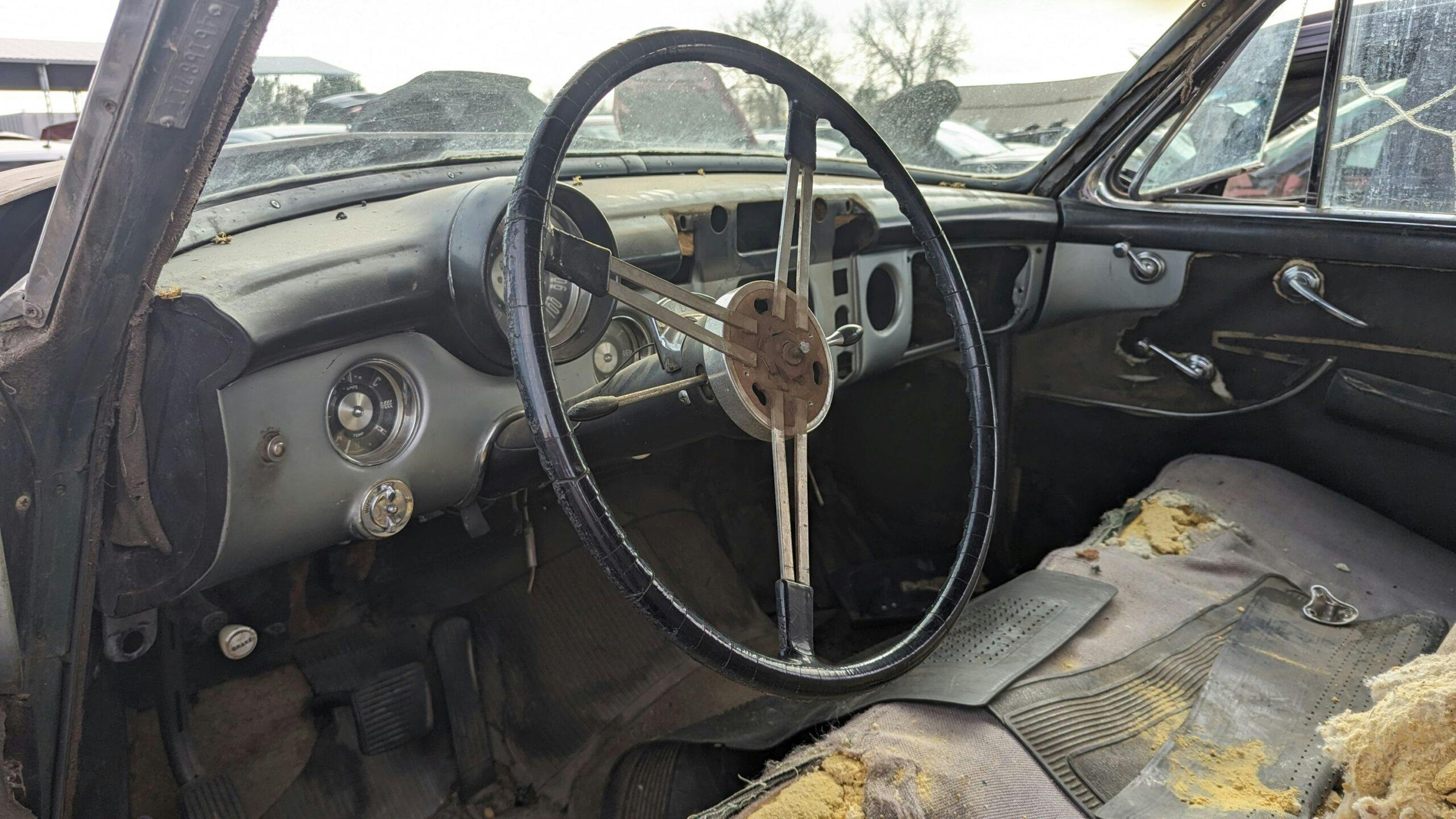




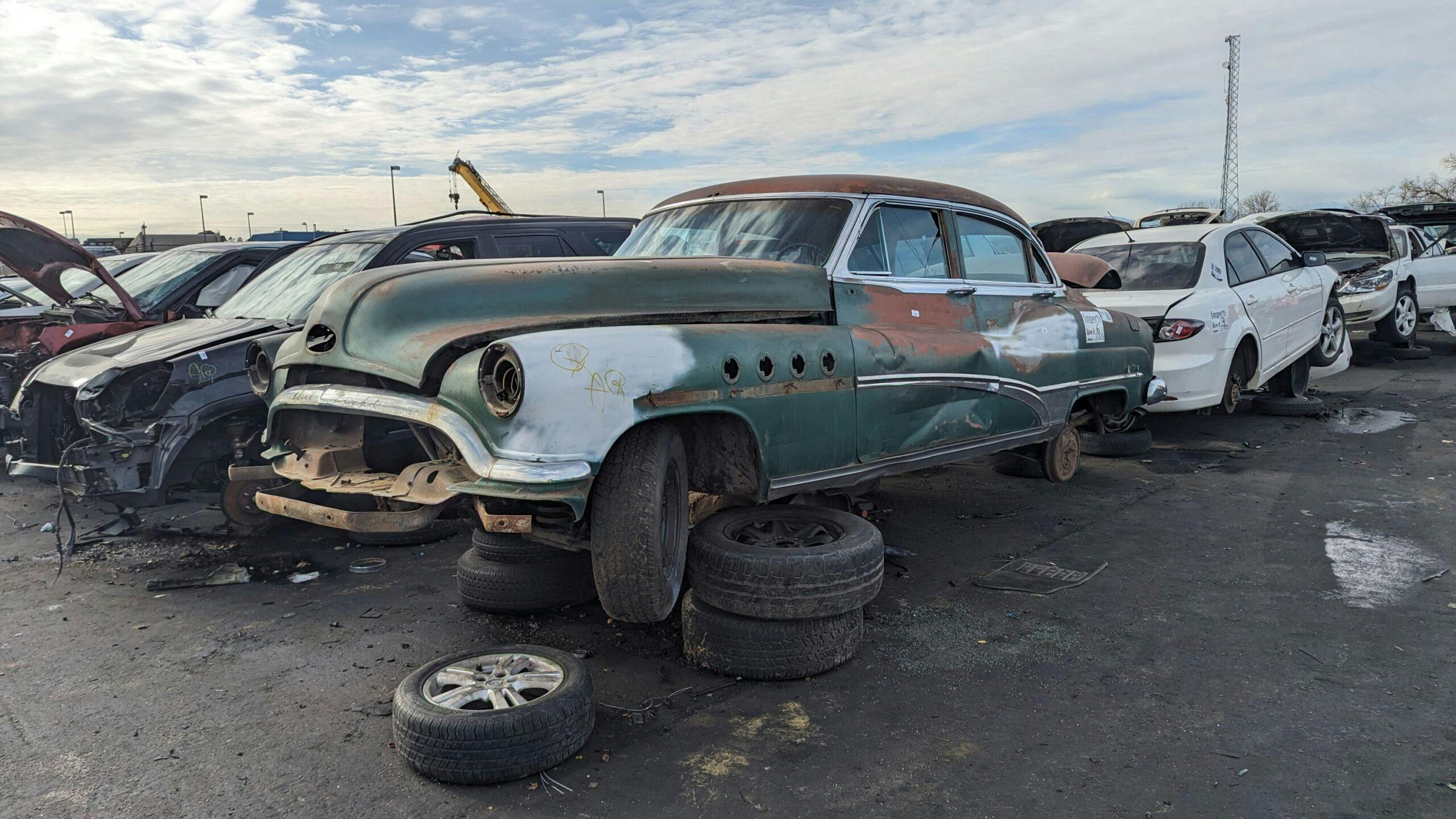


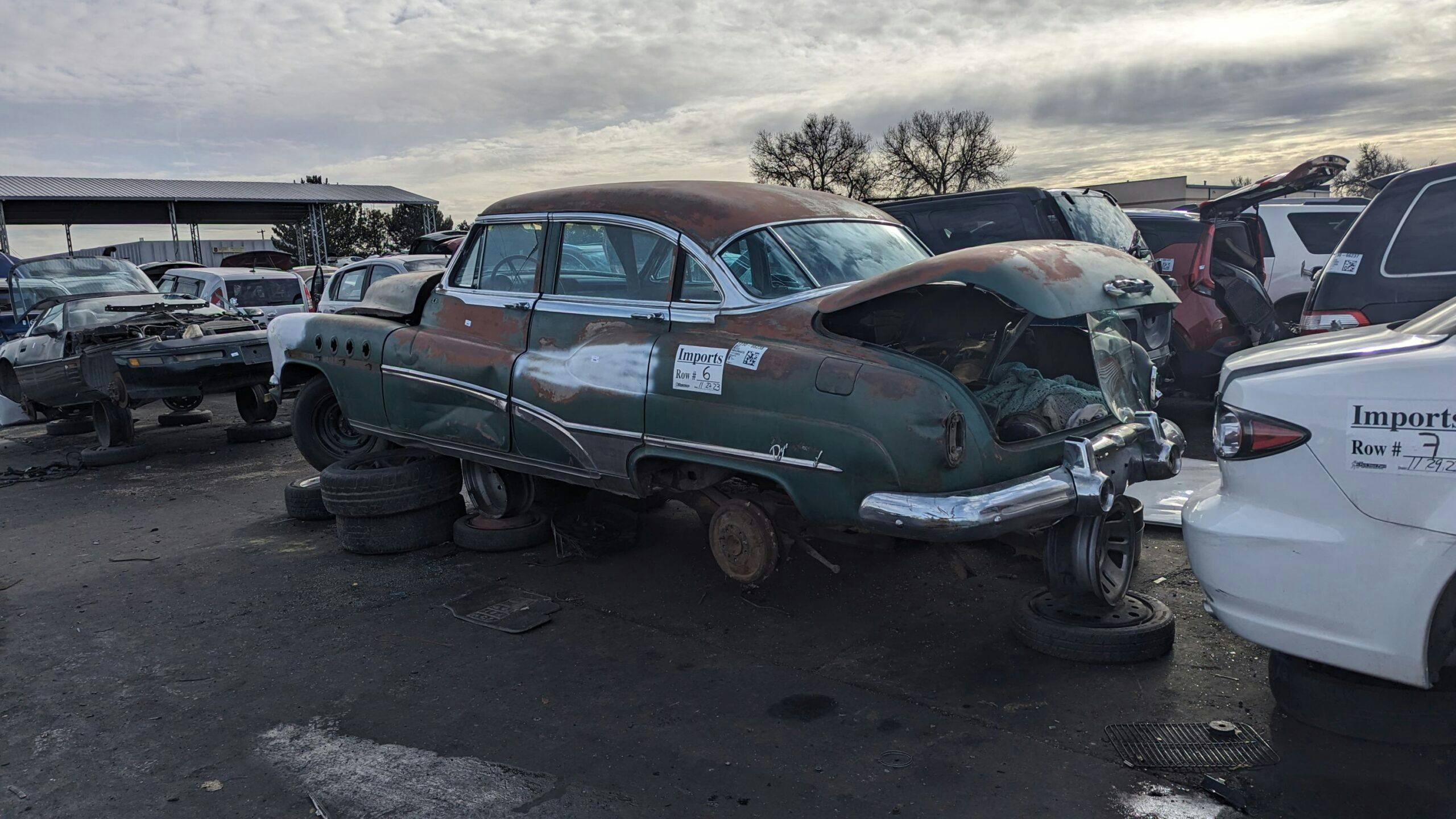


















































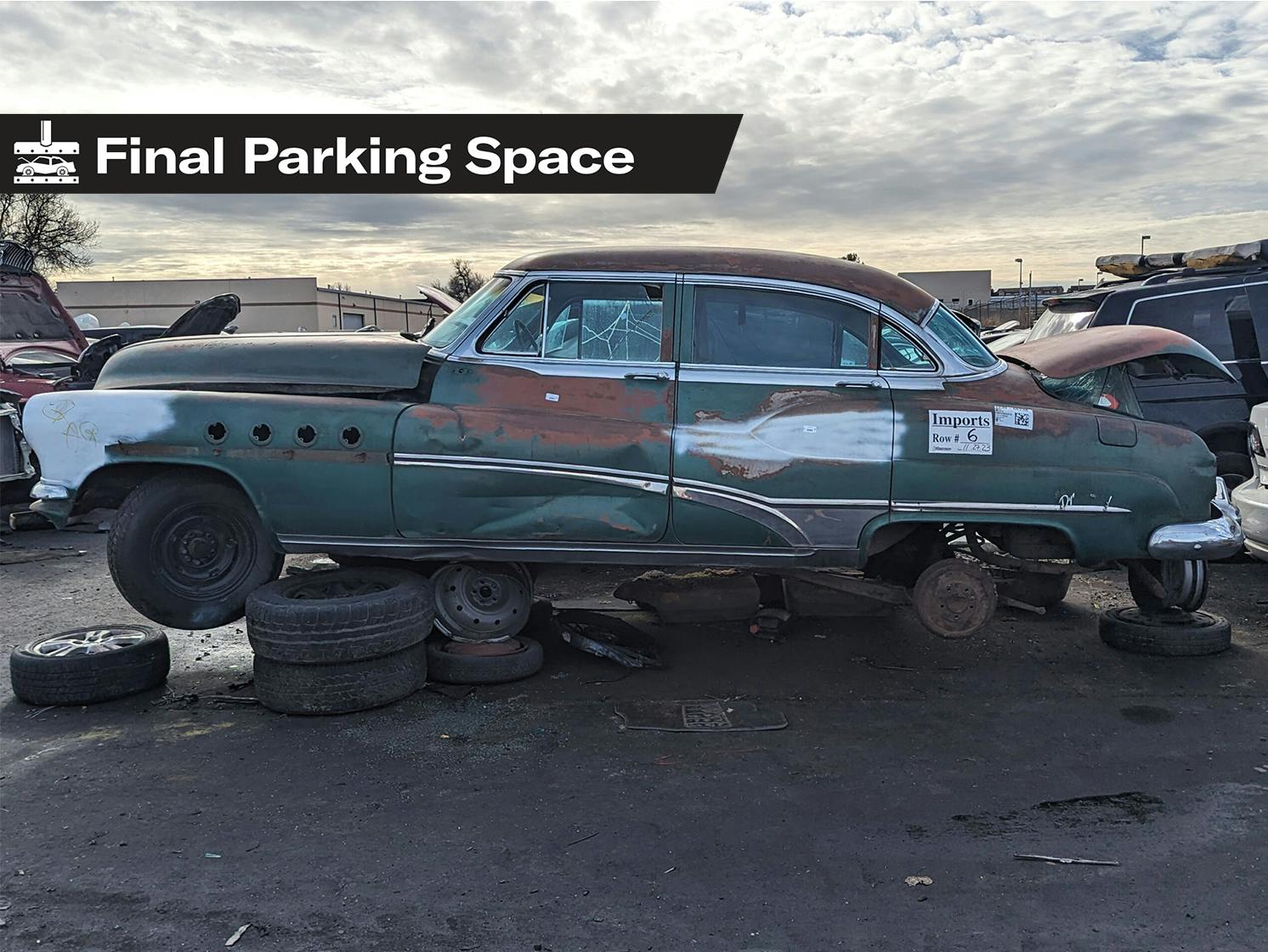
A real shame to see this Ol’ Girl headed to the crusher, from the photos it looks fairly solid…and it looks like it was fairly complete before people started stripping trim and other parts.
I ran across one of these (largely intact) at my local boneyard many suns and moons ago, and the proprietor refused to sell it to me after accurately concluding that I was a dopey kid and would not do right by it.
This one is probably a bit past the mark for having right done by it, and it’s best chance of seeing pavement again would be some sort of ‘will it run’ rat-rodish project.
It is just like my high school buddy’s first car in 1961. His father had worked for GM, and he thought it was the safest option– built like a tank. It was a cream puff, one owner, and he had it repainted two-tone, white over orchid, a curious choice, but unique. It couldn’t burn rubber, and it had immense body roll in corners, but once you got it up to 60 mph it just floated along.
Moms had a hood which opened from either side, almost lost it when hitting RR tracks when I was real young.
My uncle had a black 51 Buick. Always kept it washed and waxed. Very pretty car. As a kid I always thought it was cool — especially the hood that opened from either side.
My parents had a ’50 Special family car that withstood a side impact by a dump truck, and later Dad picked up a ’52 Super Riviera coupe that he drove to work, replacing a ’49 Studie bullet-nose coupe. These were great, distinctive cars in their time and it’s sad to see the majority of them end up in boneyards like this one. Thanks for another great story, Murilee!
I use to have a 1950′ Roadmaster Convertible & boy did that car float like it was on water. The suspension was amazingly smooth too for such an old car. Loved that Dynaflow for cruiseing.
Very cool find. Wish this car was running. I have not seen a lot of straight 8 engined Buicks on the road.
You know the funny part is that someone could likely do a major tune up and a oil change , and it would probably fire right up.
I had a old Hudson I’d found back years ago that looked about the same and after doing the tune up , oil change cleaning of the carburetor and a bit of Mystery oil soaking in the cylinders for a couple days , it took right off and ran great . Funny thing is that after the mystery oil burned off and after coming up to running temp, it didn’t seem to be burning any oil. These old straight 8 motors are pretty bullet proof from my experiences with them .
Now several years later that same motor is still ticking away and gracing the local car shows every week end.
Rather sad story when you see what it looked like when it came to the junk yard. Way too nice to have a 70+ year old car to end up this way. Click the link below to see it.
https://www.lkqpickyourpart.com/inventory/aurora-1230/?search=1951+buick
The first car I “worked on” in high school auto shop was a 1953 Buick Straight 8. We shortened the chassis and driveline of the cars creating “half cars” so we had room in the shop and yard. Mind you, this was a necessity in the 70s when all the cars were huge. They were drivable. Well in the back lot of the school anyways. The first class in auto shop was “troubleshooting”. Two students were assigned a car and we learned how to get it running and keep it running. What that meant is that once we got it running, it may not be running the next class. The teacher’s assistants (TA) messed with the running car before you came in the next class. We were given an flow chart on trouble shooting on Day 1 and it is still embedded in my mind. And yeah, I became a TA. Can’t tell you how much my teacher, the curriculum and TA experience I still draw on when I work on a car. If you can learn how to make a car not run and bury the problem, there’s not much that can get by you trying to get one running.
Does anyone know where this car is located? I am restoring a 52 roadmaster which is mostly intact but there are pieces on this car I could really use. Mine has been stored inside since the early 1960’s so it has no sun rot and no rust. But some pieces are impossible to find. Thanks for any help.